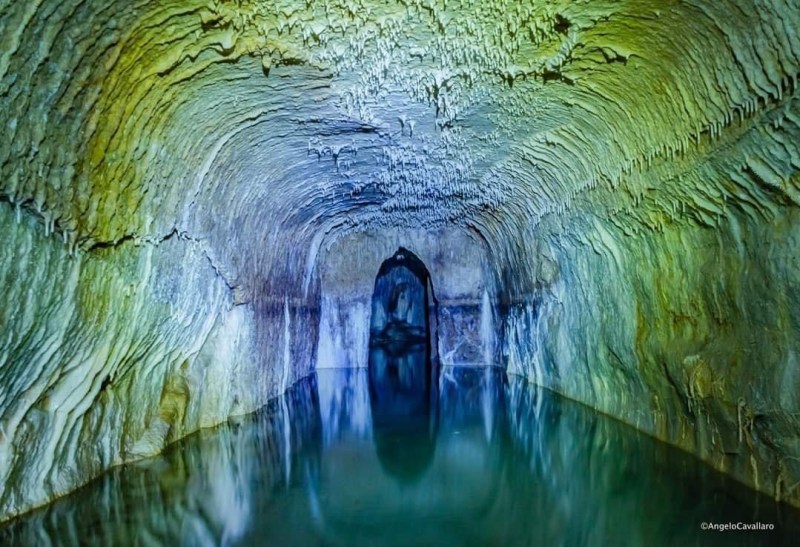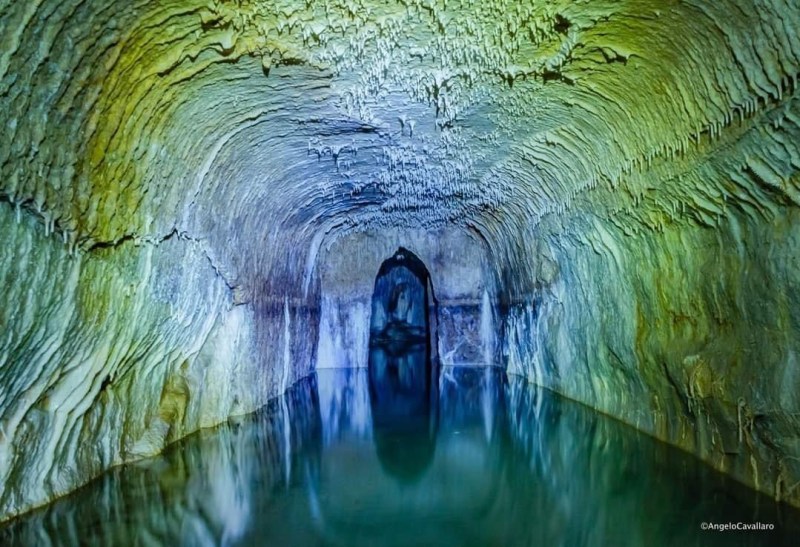The “Grotta di Gioppo” is an artificial rock complex, of uncertain use, from the Greek-Roman period, presumably built between the 1st century. BC and the 1st century AD and now falling within the territory of Sant’Ilario dello Ionio
MISTERY HUNTERS CULTURAL ASSOCIATION:
THE GROTTA DI GIOPPO: BETWEEN NATURE AND SPIRITUALITY
The “Gioppo’s cave”Is an artificial rock complex, of uncertain use, from the Greek-Roman period, presumably built between the 1st century. BC and the 1st AD and now falling within the territory of Sant’Ilario dello Ionio
It was traced back to the 1980s by Renato Mollica and subsequently documented by Giuseppe Macrì
The narrow entrance to the mysterious cave, used for centuries as “source“Due to the inactivity that led to the complete filling of water of the two environments of which it is formed, it is hidden from view by shrubs, in a private land.
The first room is a corridor carved into the rock with an almost square section; it measures approximately 2.70 meters in width, just under 3 meters in height and extends for about 30 meters.
About three quarters of its depth, on the left wall, there are yellowish calcareous concretions, a color due to the sulfur present in this area of the cave, and a continuous dripping.
This first room ends with a perfectly smooth wall, at the center of which an opening with a “sixth acute”, Almost 2 meters deep, which further denotes the anthropic make-up of the entire complex.
This sort of door leads into the main room: a small shining cathedral, a dome up to 4 meters high, with the roof studded with thousands of stalactites, the result of the slow accumulation of mineral salts transported by the water that filters underground.
On the walls, at a height of about 3 meters from the ground, small holes are still visible, a few centimeters in diameter and depth, perhaps made for housing torches.
In a deep position, perfectly in line with the longitudinal axis of the entire complex and with the connecting passage, there is a small niche, also apparently surmounted by a pointed arch, measuring about 60 x 100 cm and a depth of about 40.
Inside, another recess, very small in size (10 x 20 cm, for a depth of another ten cm), which appears to be the real “mouth of the spring“, Being at this point the dripping a little more copious and continuous, defined the”Sancta Sanctorum“Of the rock complex.
At the base of the “niche”, Consistent mineral concretions, very white, pure, layered and declining towards the center of the environment.
The presence of two springs, of which the first, in a secluded position in the first room and characterized by the presence of sulfur, while the second, pure and crystallinein a more solemn position, in the circular hall, they made us think of the complex as a place destined for the celebration of Orphic rites.
Through the study of the Hipponion Lamina (now present in the National Archaeological Museum of Vibo Valentia) we know some important aspects about these rituals including
“The prohibition of drinking at the first source and the importance of drinking at the second, the source of Memory Goddess (Mnemosyne)which is an indispensable act to set out on the path of salvation “
The two springs, that is, one poisonous and the other, the second, pure, were only the instrument for the performance of a rite, with certainty attested and celebrated in antiquity in Calabria.
Photo: Angelo Cavallaro


